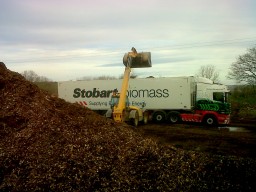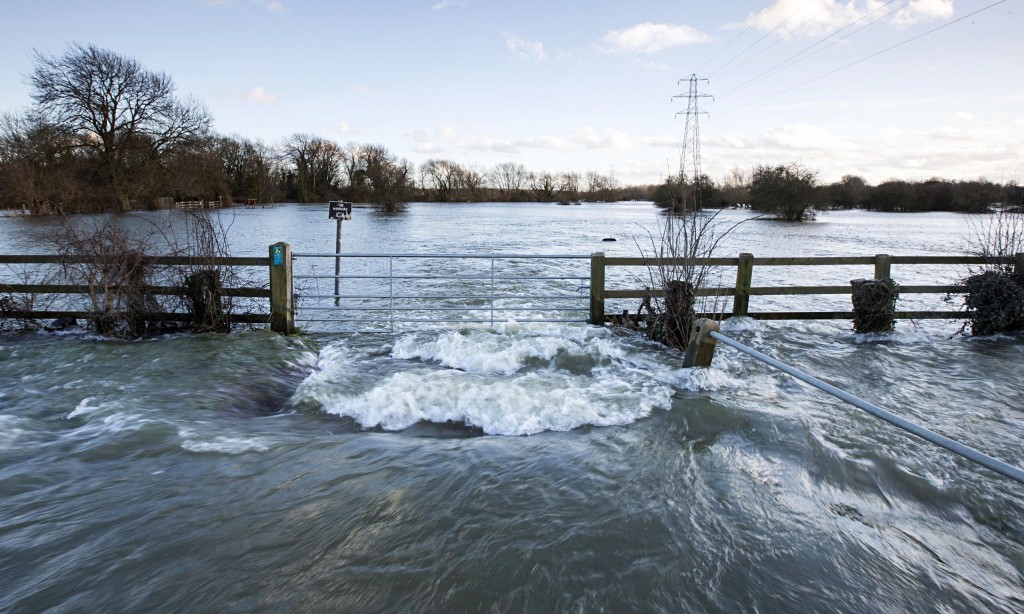If you’ve ever hired a Tree Surgeon to prune your trees or trim your hedges, or even if you’ve done these things yourself, you’ll have noticed that in no time at all a huge pile of green waste is generated, often much more than you might of imagined possible. At Tree Maintenance we create a massive amount of green waste every year, most of which we are asked to remove from site and therefore need to recycle. Everything we remove from site is recycled and nothing at all ends up in landfill.
Waste from tree work generally falls into 3 categories:
- woodchip
- timber and
- non -chippable waste (hedge trimmings, minor pruning, and contaminated sweeping from the floor).

One of our towable wood chippers
The vast majority of our waste is processed with wood-chippers (known in the trade as chippers) to produce woodchip. Although there are different types of chippers, all of our chippers are trailer-mounted machines that we tow behind our trucks and they are capable of discharging the woodchip directly onto the back of the vehicle. The waste that we can not process with a chipper is generally loaded onto vehicles by hand.
Some of our customers keep the waste produced from their job. The most common request is to keep the timber so it can be used for firewood, or occasionally for woodturning or carving and on rare occasions timber is kept for planking. Woodchip is often kept by our customers for use on paths or on borders as a suppressant for weeds and to retain moisture.
So back to the waste we remove from site – what do we do with it all?
Firstly the woodchip:
This amounts to hundreds of tonnes a year and we stockpile this at our yard. Most of this woodchip we sell on for use as mulch for gardens or paths. The woodchip is first stored for several months to allow it to compost before it’s fit to be used as mulch. If fresh mulch is spread on a garden it can have an adverse effect on the plants because the nitrogen required for the bacteria that breaks down the wood gets removed from the soil. Therefore it’s far better to allow the woodchip time to compost before it’s used.

Loading for Biomass
We are often asked how much woodchip is required for a garden of a particular size. As a general rule of thumb a good depth to lay down the woodchip as a mulch is no less than 5cm. We sell woodchip by the cubic metre and one cubic metre of woodchip will give a mulch depth of 5cm over an area of 20 square metres. Therefore by roughly measuring the area of garden to be mulched, it’s very easy to calculate the volume of woodchip required. We deliver the woodchip in bulk loads on a tipper truck and offer huge savings over the cost of buying it bagged from a garden centre.
The woodchip that we don’t manage to sell as mulch is sold for Biomass fuel for use at power stations.
Timber:
These days we tend not to remove much in the way of good quality timber because most customers either burn it themselves or have a family member or friend that utilises it. Our employees log the small amount of good timber we remove for use on their own fires at home (a small perk of the job). The rest of it, generally conifer, Willow, Chestnut and other low-grade wood gets used by various other local company contacts for logs.
Non chippable waste:

Shredded waste is used as Biomass fuel
Hedge trimming creates a large volume of material that is not suitable to process with our chippers. In addition to this, we have quantities of material that is raked or swept up and is contaminated with soil and grit (which can damage chipper blades). About once a year we hire in Green Waste Management Services Ltd, a specialist company with a commercial shredder, that is designed to process this sort of waste. Last time we did this, 850 tonnes was processed in 2 days! This shredded waste (sometimes mixed with woodchip) is then taken away for use as Biomass fuel at various power stations.
Unfortunately what ever we do with the waste from our tree work, a certain amount of energy will be used to process and transport it. We do our best to keep this to a minimum, through efficient work and journey planning and by processing waste in bulk quantities whenever possible. We also make sure that we sell as much of our woodchip locally as possible before we allow any to be transported further afield.








